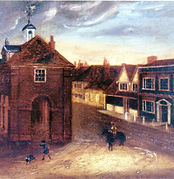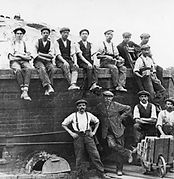top of page
Modern History
By 1800 a total of four fairs occurred annually, drawing traders from all over the county. We also know that in the 18th century a tanning industry thrived in the town.
During the Napoleonic Wars, Bishop’s Waltham served as a ‘parole town’ for up to 200 captured French and Spanish naval officers. The officers were billeted with civilians or in local inns – ordinary sailors were imprisoned in floating hulks in Portsmouth and other harbours. The best known officer to stay in Bishop’s Waltham was Admiral Pierre-Charles Villeneuve, commander of the joint French-Spanish fleet that was defeated by Nelson at the Battle of Trafalgar. He was first accommodated in The Crown Inn (where a blue plaque commemorates his stay), but was then moved to Vernon Hill House. He was later exchanged for four British captains and returned to France.
The second half of the 19th century marked the beginning of Victorian prosperity for Bishop’s Waltham. This prosperity came from the creation of a number of enterprises, in particular the Bishop’s Waltham Clay Company set up in the area now known as Claylands. Most of the enterprises were instigated by Sir Arthur Helps, Clerk to the Privy Council and Private Secretary to Queen Victoria. He built houses for his workers in Newtown and was influential in a number of projects which benefited the town; the introduction of the railway, the opening of the gas works and the provision of gas street lighting at quite an early date.



bottom of page




